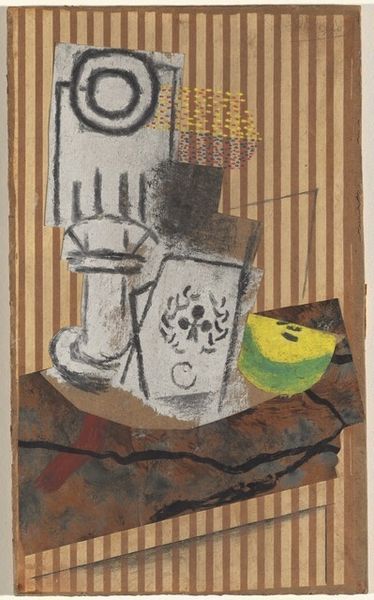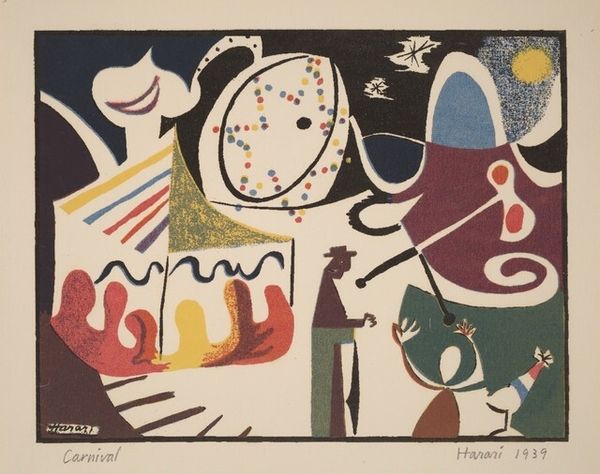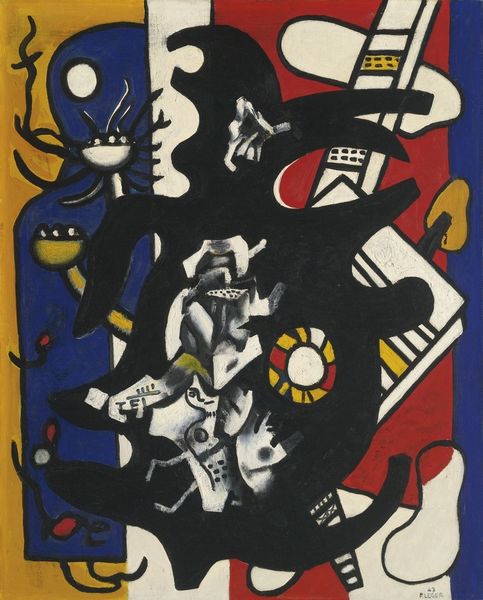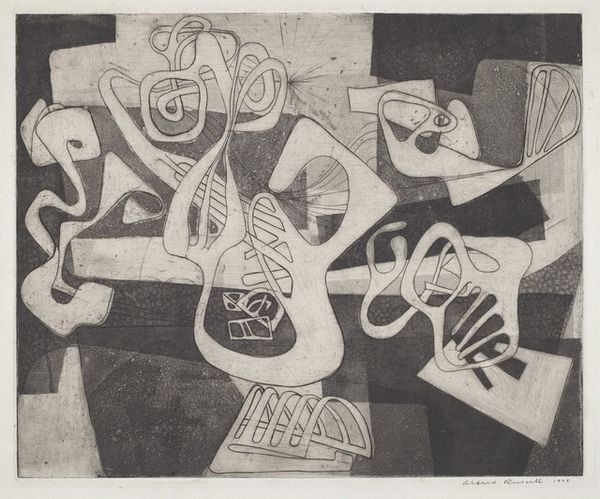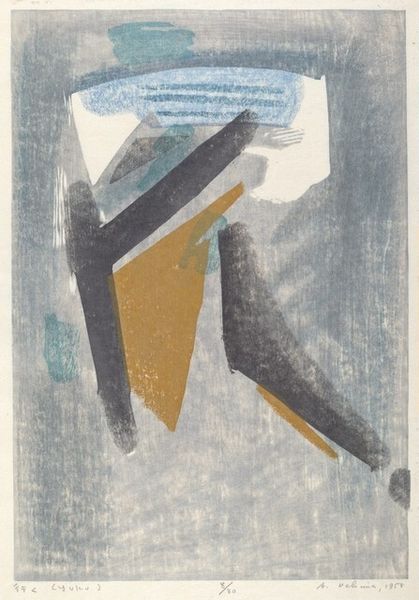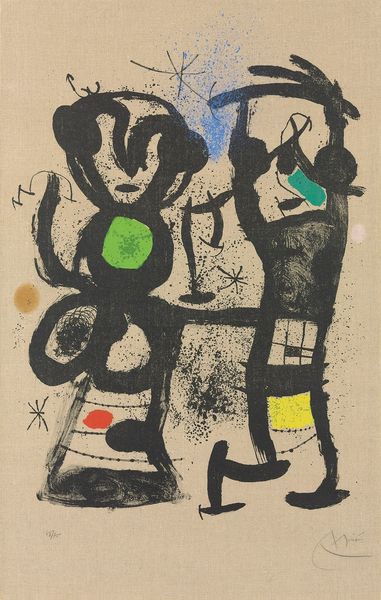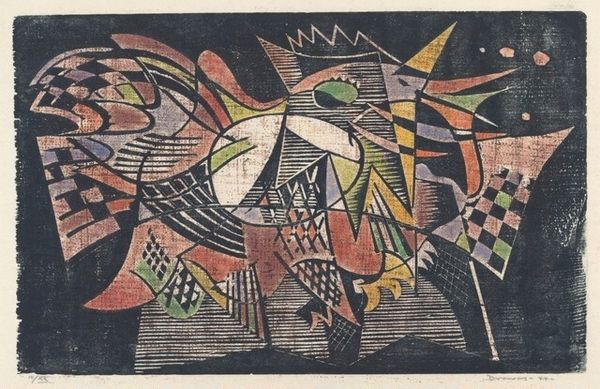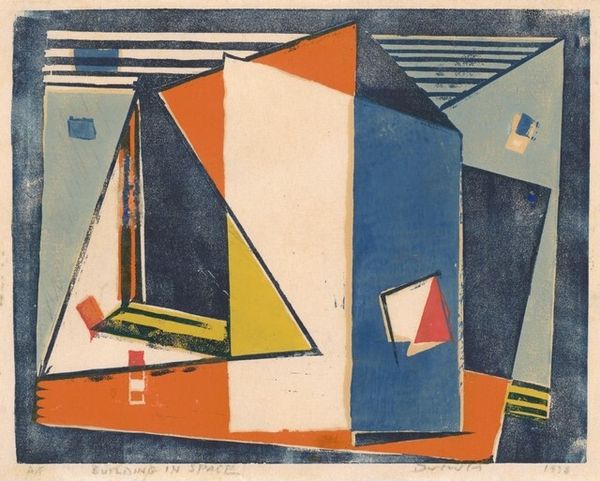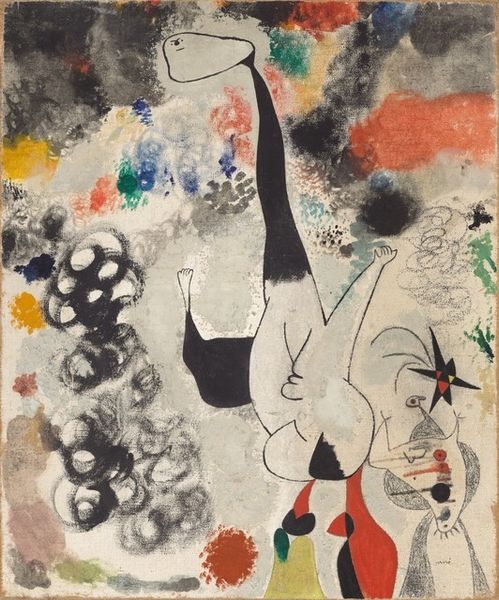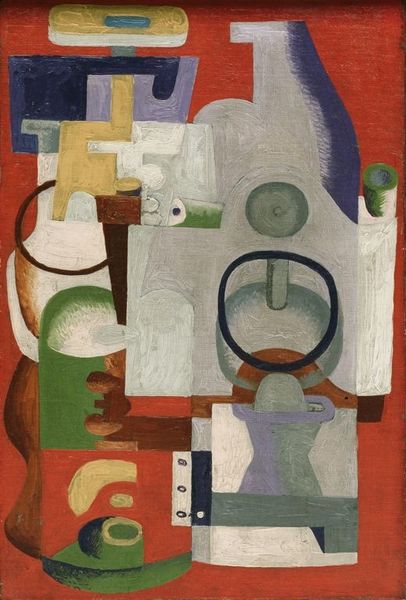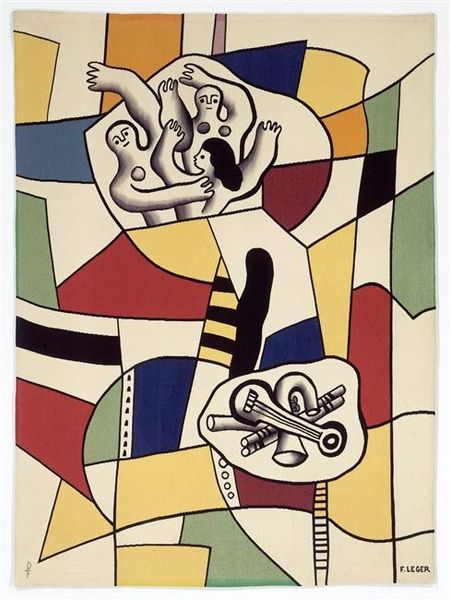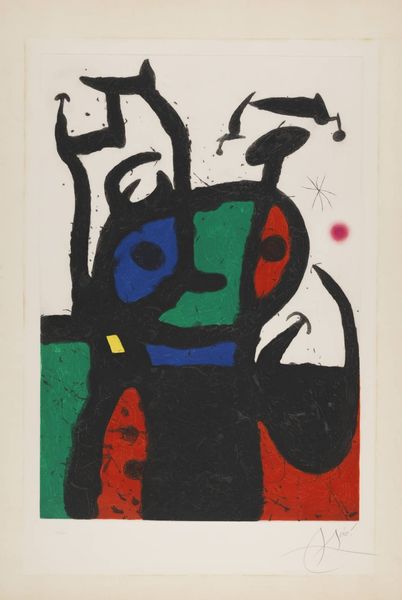
print, etching
#
abstract-expressionism
# print
#
etching
#
geometric
#
abstraction
#
line
#
watercolor
Dimensions: plate: 24.13 × 19.69 cm (9 1/2 × 7 3/4 in.) sheet: 36.2 × 30.16 cm (14 1/4 × 11 7/8 in.)
Copyright: National Gallery of Art: CC0 1.0
Curator: We are standing before "Flying Machine," an etching made circa 1950 by Leonard Edmondson. Its composition presents a playful arrangement of geometric and organic forms. Editor: It does have a whimsical quality, doesn’t it? The palette, a mix of muted blues, yellows, and browns, evokes a sense of nostalgia and quiet curiosity. It makes me think of mid-century modern design and its optimistic spirit, though it’s certainly abstracted. Curator: Indeed. Edmondson, active during the rise of Abstract Expressionism on the West Coast, seems to tap into the post-war fascination with flight, but channels it through a surrealist lens. This machine isn’t functional in a literal sense, but perhaps explores the subconscious desires associated with technological advancement at the time. Editor: I see what you mean. The shapes – circles, triangles, odd rectangles – seem vaguely mechanical yet also reminiscent of figures, faces, even landscapes. What resonates is how this piece is representative of a time filled with anxiety about where we were headed technologically. The shapes become almost totemic in their symbolism. Curator: Right. Consider how printmaking itself reflects that mid-century moment—the democratic impulse to disseminate images widely, alongside a modernist urge to reduce form to its essential elements. The very texture of the etching emphasizes the hand of the artist within a medium suited to mass production. Do you feel like he’s commenting on technology, or almost building an artistic symbology in partnership with it? Editor: A compelling thought! Perhaps both? He is very much an interpreter of progress. He uses these symbolic forms almost like ideograms, inviting the viewer to piece together the narrative and meaning themselves. Each color seems chosen to elicit specific feelings—the ochre and reds for earthbound energy, the blues hinting at sky and the unknown. Curator: The longer I study it, the more I believe that the flying machine serves as an emblem for something other than merely mechanical progress, suggesting emotional or psychological flight— perhaps a need for liberation. It's striking to consider its resonance during a period of both intense creativity and looming political unease. Editor: It's certainly not just a pretty picture. Edmondson is grappling with the complexities of his era, using the language of abstraction to express the unspoken anxieties and dreams of a generation. Looking at this "Flying Machine" through the lens of history reminds us of art's ability to capture both the spirit and the uncertainty of its time.
Comments
No comments
Be the first to comment and join the conversation on the ultimate creative platform.
